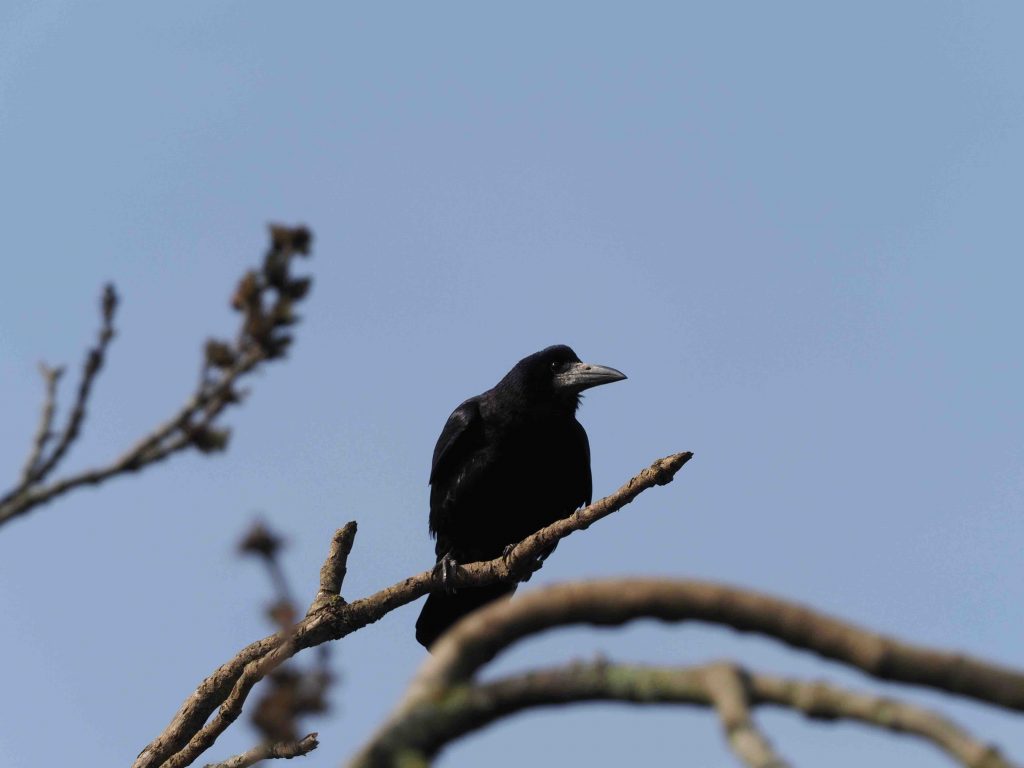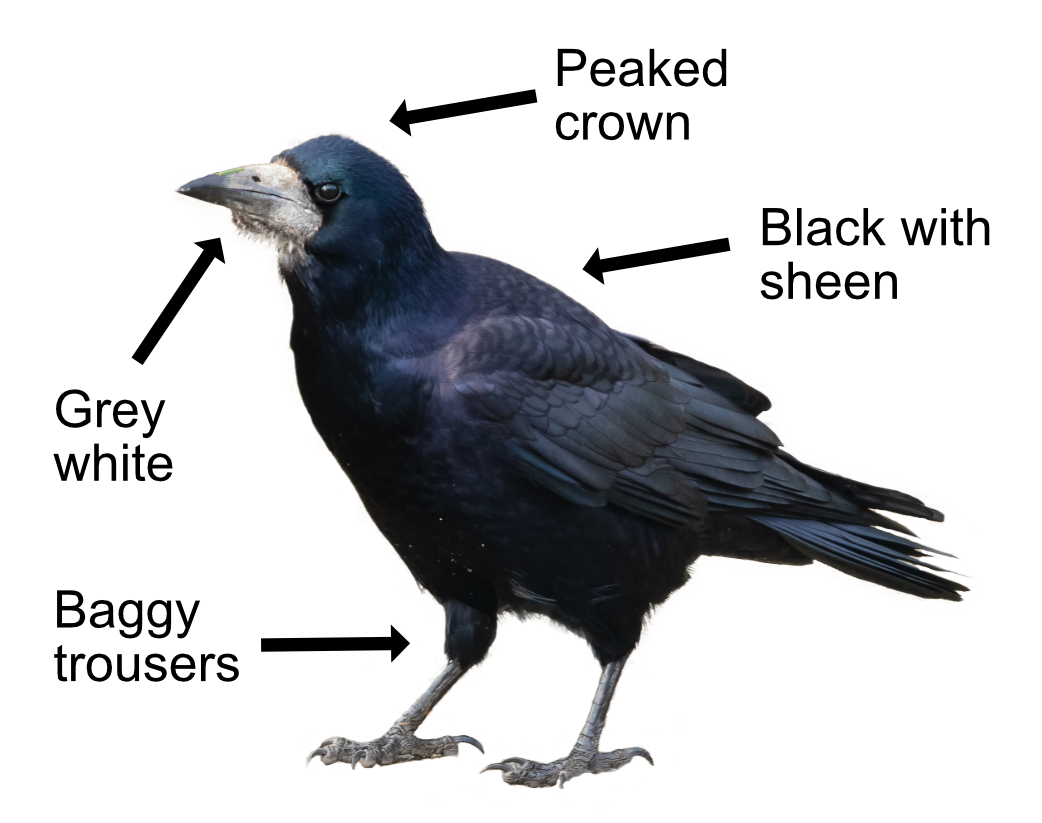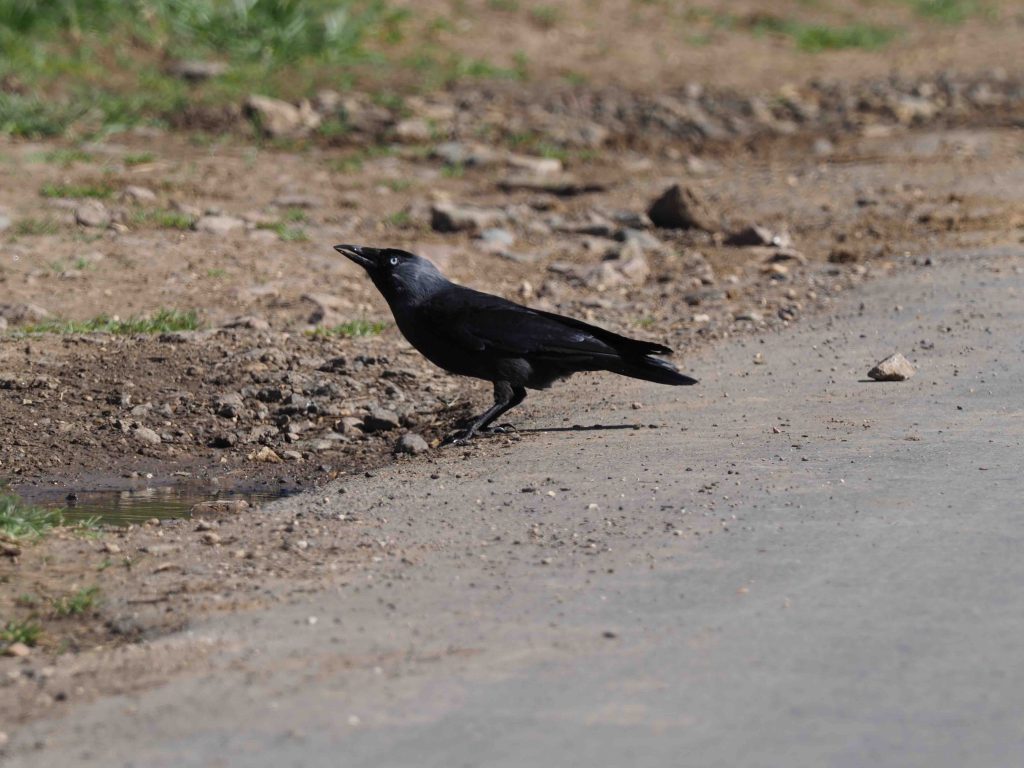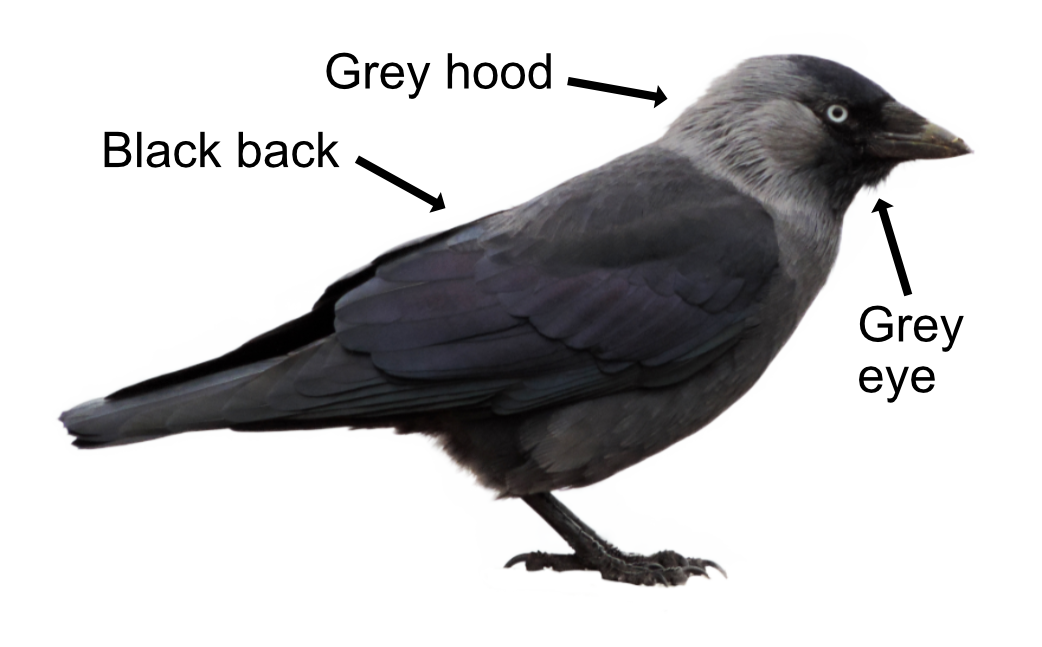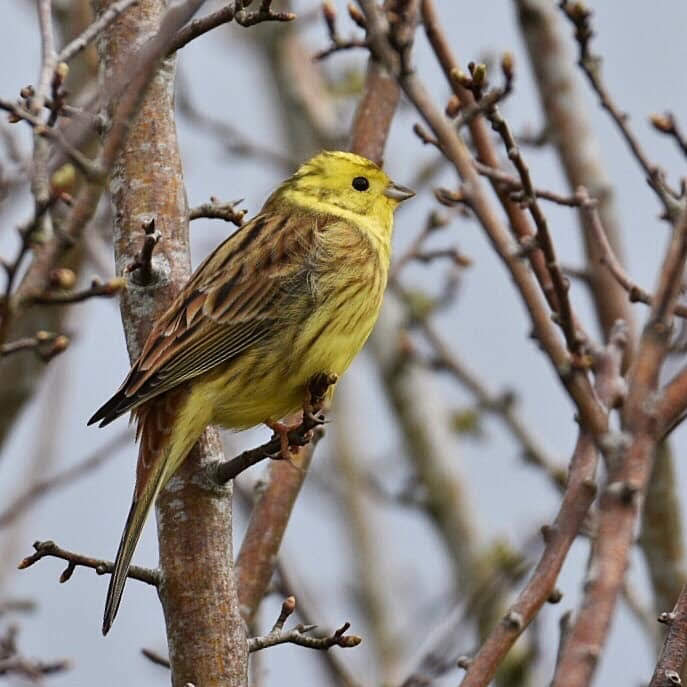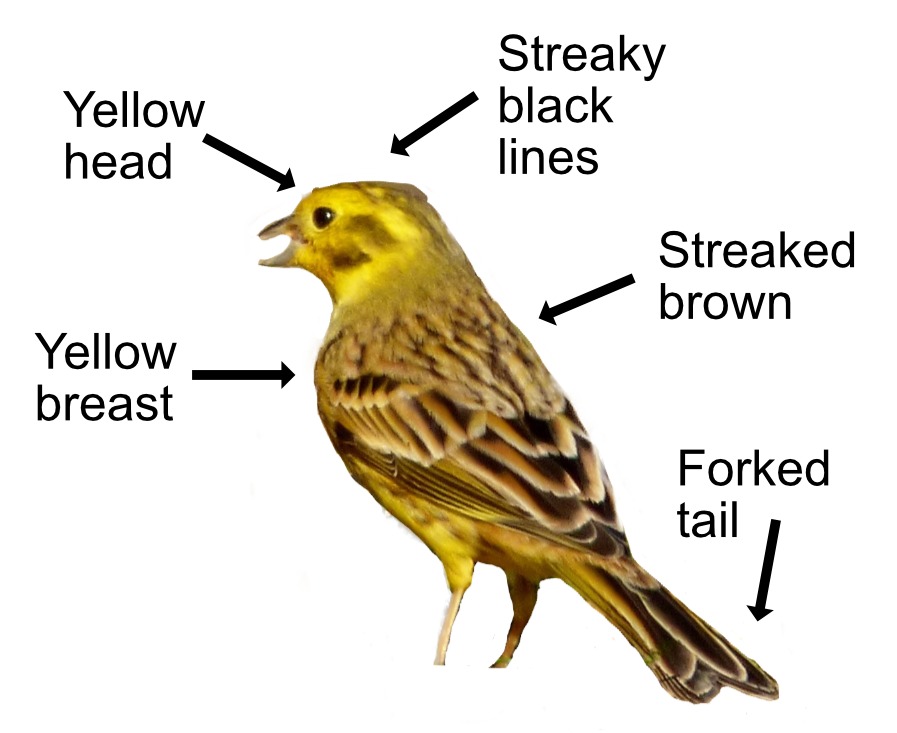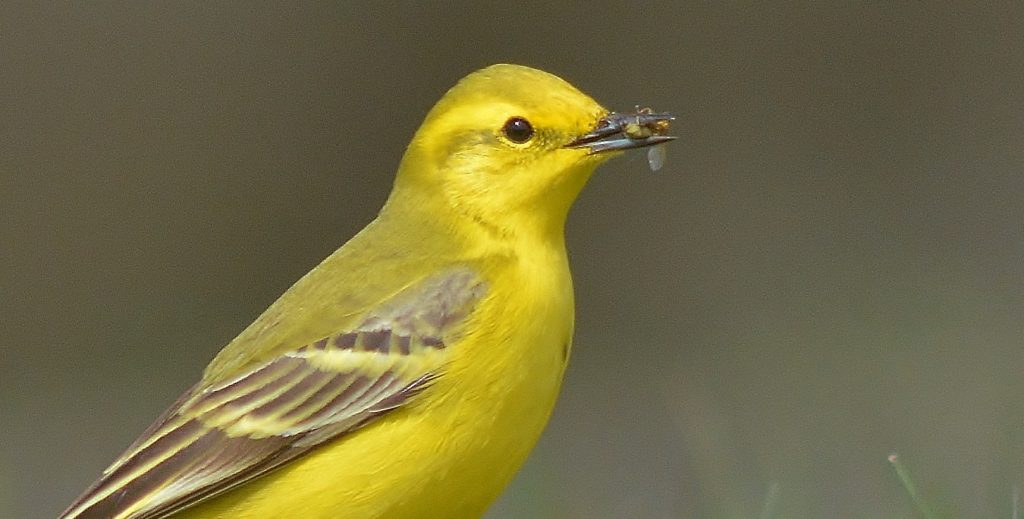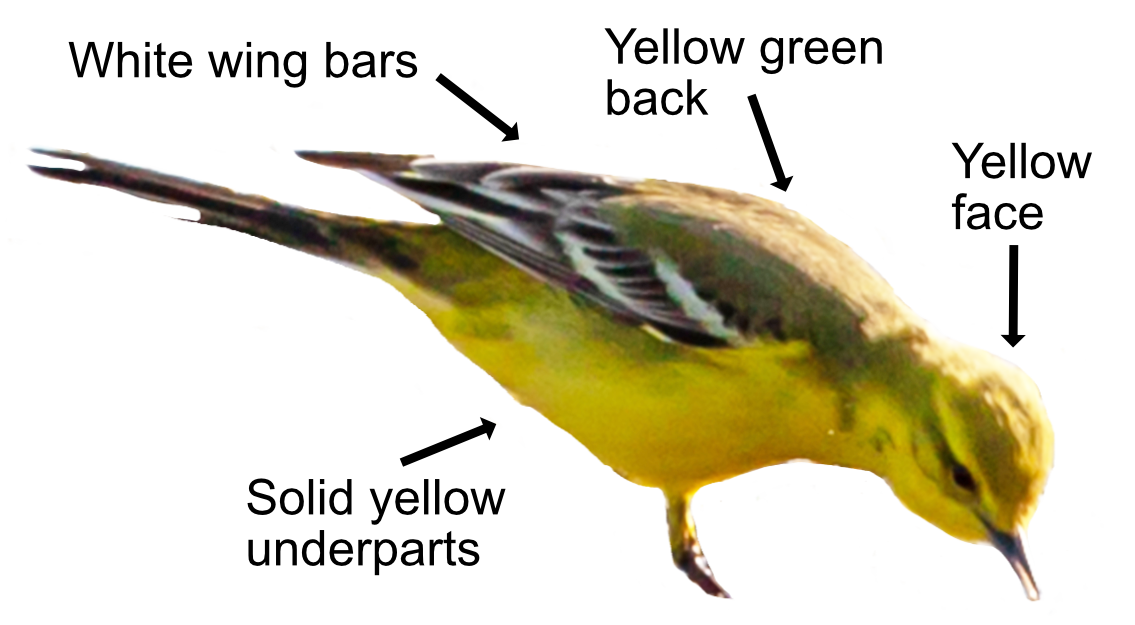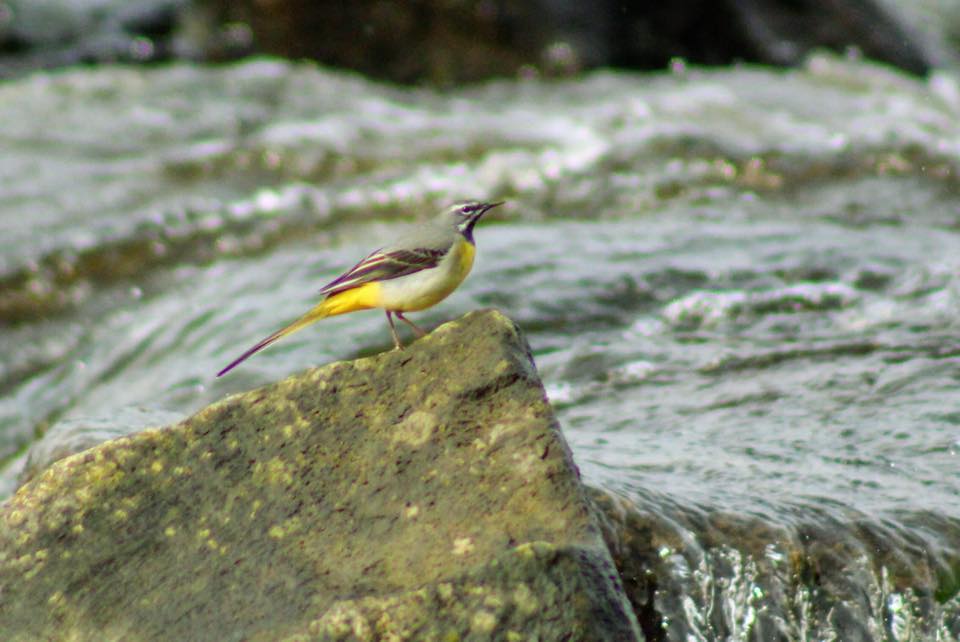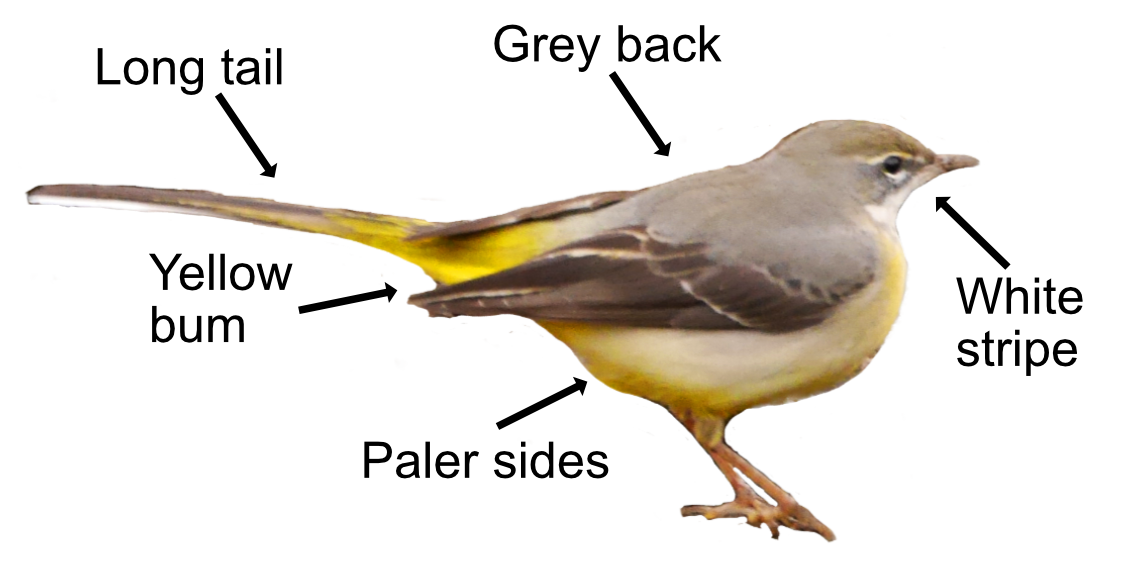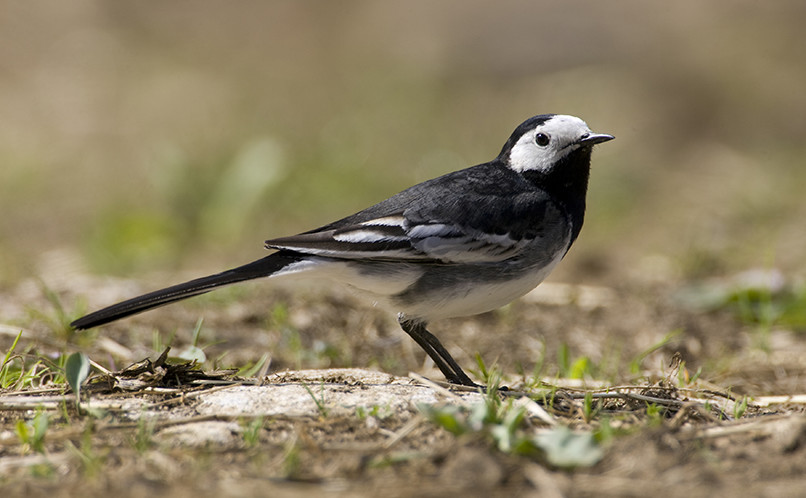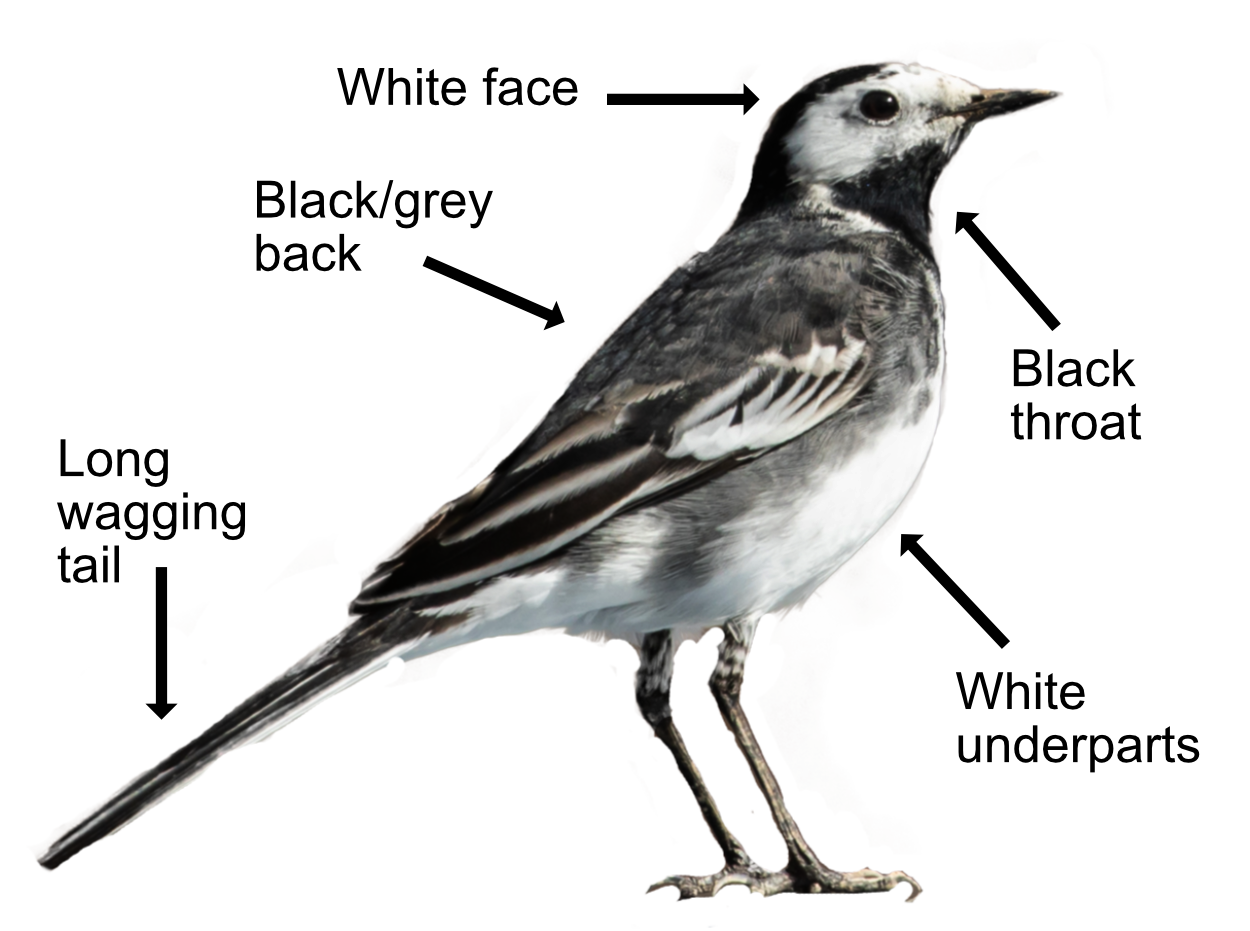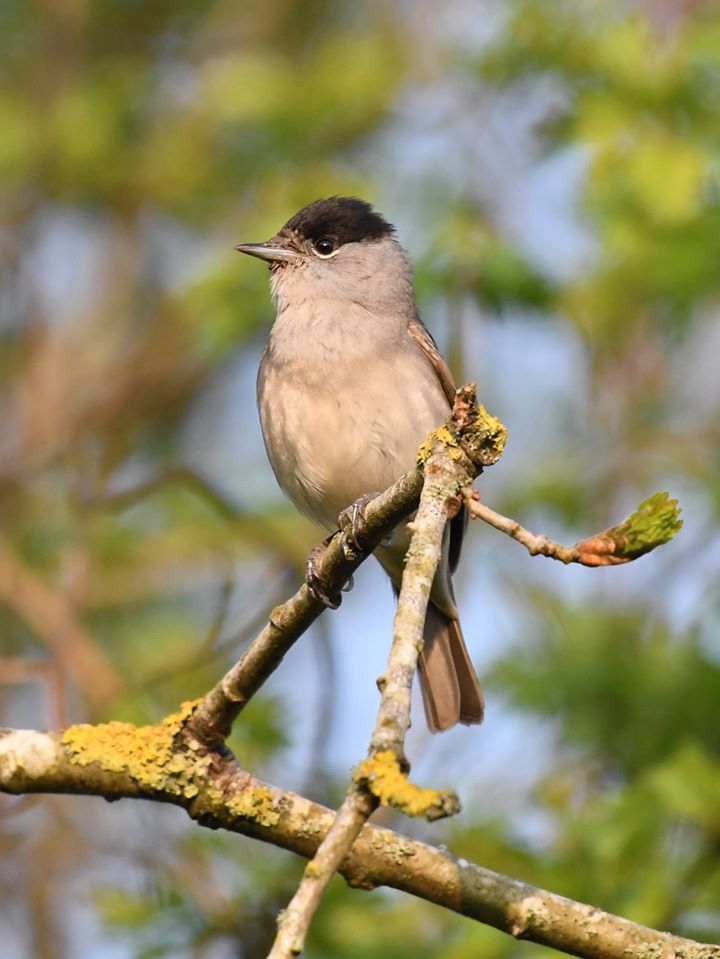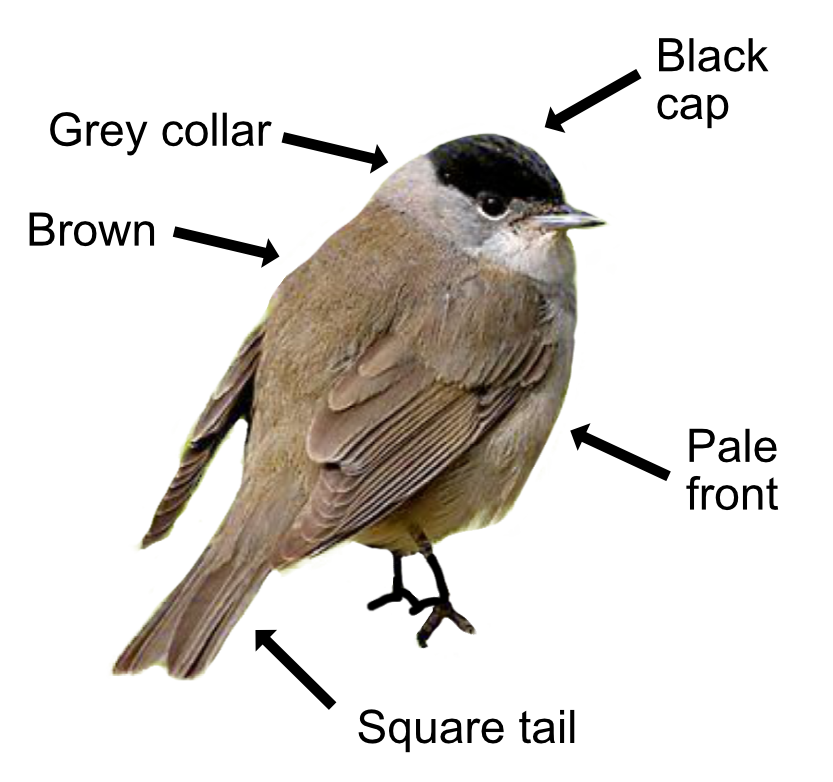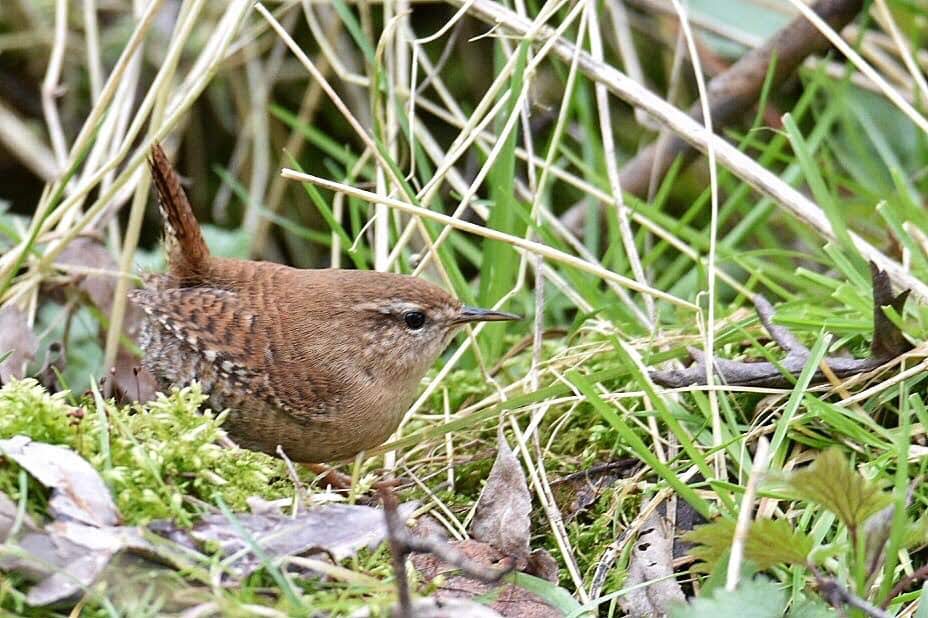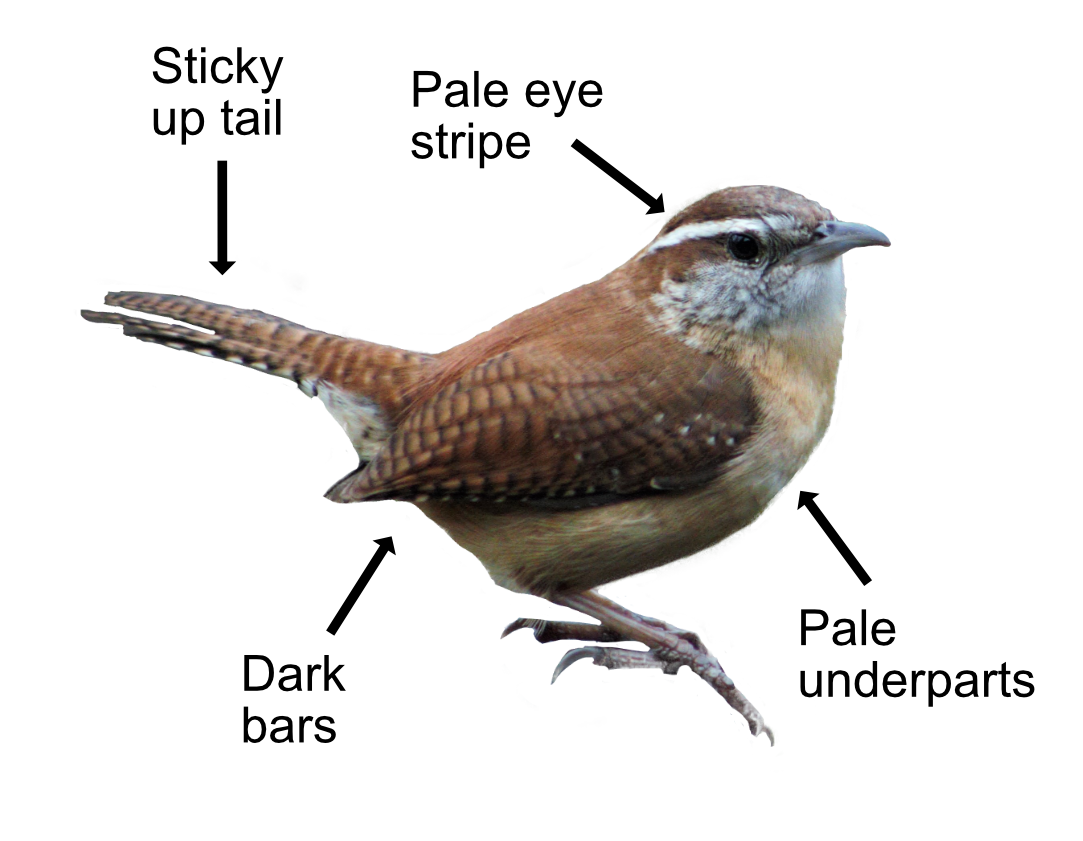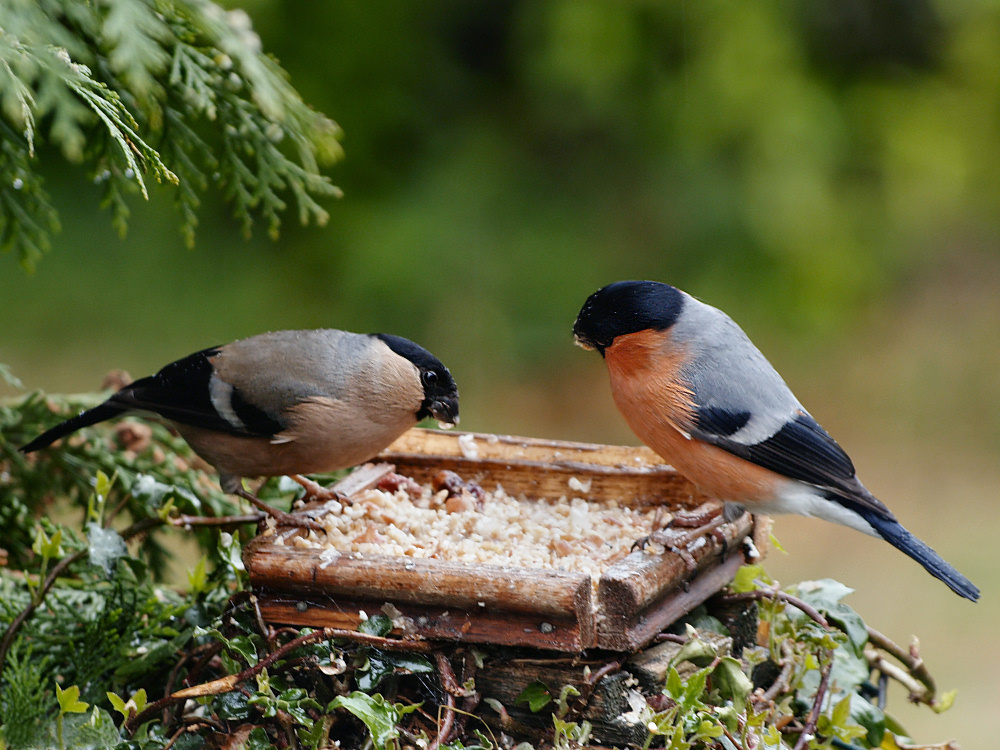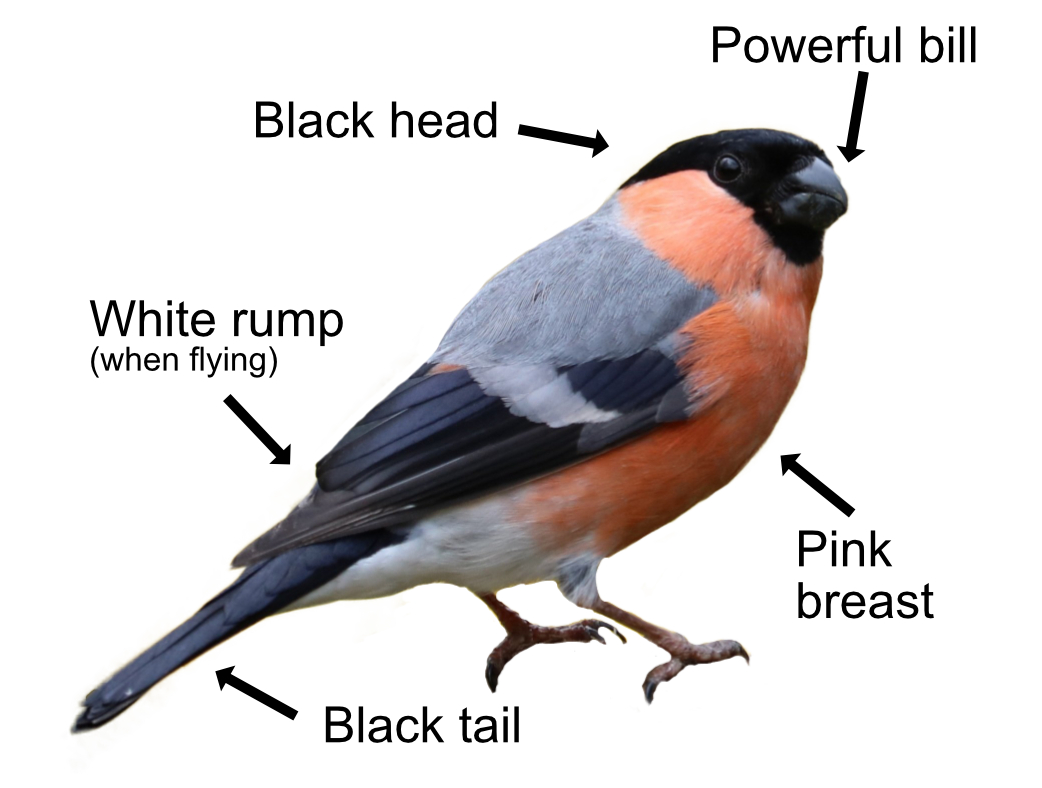
Carrion Crows, like undertakers, love to dispose of dead bodies (carrion) and hence their name. A group of Carrion Crows is called a ‘murder’ which is a brilliant description of an undertakers convention (and probably what it is like). They are anti-social birds keeping themselves to themselves or staying in pairs, though they can form small flocks when looking for bodies in parks or on beaches. Like other crows, they show intelligent behaviour.
The Carrion Crow is all black and neater looking than a Rook with a broad crown, curved black bill, black feet, and short looking head with a flat low forehead. When flying the wings are oblong, broadening at the tip, and the tail looks square. The wings are held straight in their sedate, straight flight with little soaring.
The Carrion Crow calls when perched or in flight with a hard edged “kaarr”. They usually repeated their call several times in succession, compared to a Rook who calls only once. The Carrion Crow’s call can sound malevolent, which is its function, saying “I am master of ceremonies here.”
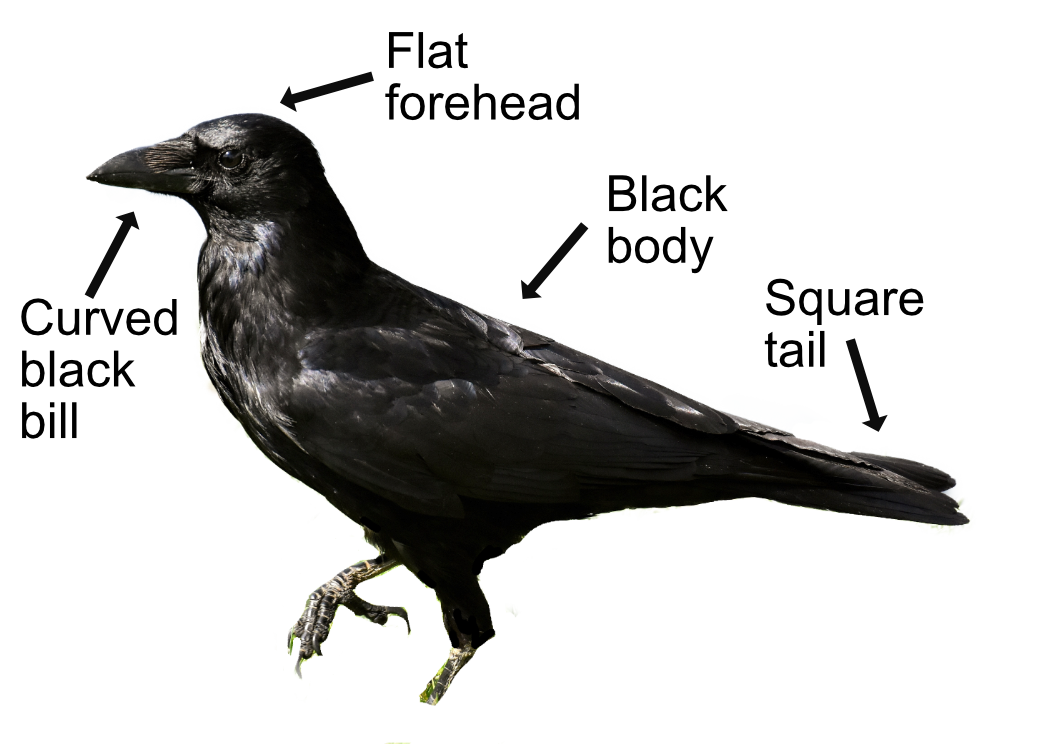
Like other crows, the Carrion Crow will eat just about anything: insects, grain, small animals, carrion, and even shellfish, which they drop onto roads or rocks to open. They feed on the ground and walk or hop when finding their food. They are scavengers by nature so enjoy rubbish tips for a bit of tasty household waste. Carrion Crows will also harass birds of prey or even foxes to pinch their kills and get a dead body. Both birds build the nest of sticks lined with softer plant material high in a tree, a tall building or even a pylon. They do not nest in colonies like Rooks. The 2-7 eggs hatch after 18 days and the young can fly 32 days later. The youngsters become fully independent after a further 3-5 weeks once they can croak psalm 23 (The Lord is my Shepherd) and follow a hearse. The parents are very protective of their kids and will actively harass predators and competitors that enter their territory who threaten them or their offspring, engaging in mobbing behaviour to defend themselves.
The Carrion Crow is a sedentary resident with 1 million pairs found everywhere from towns to remote islands and their numbers are stable. Their Latin name is ‘corvus corone’ which comes from the Latin ‘corvus’ meaning ‘raven’ and the Greek ’korone’ meaning ’crow’.
